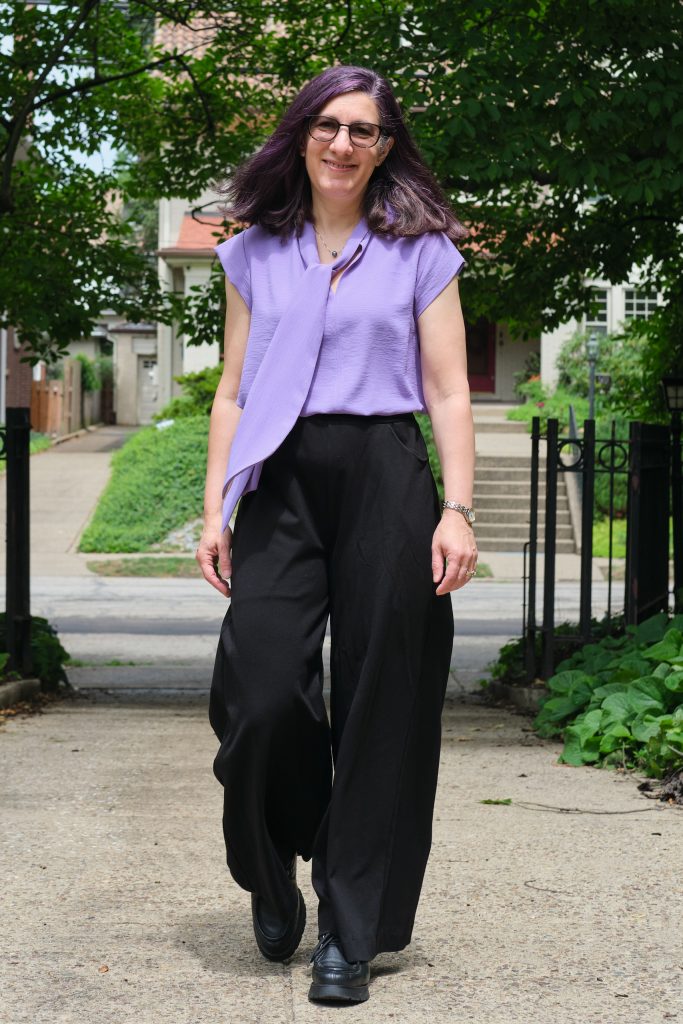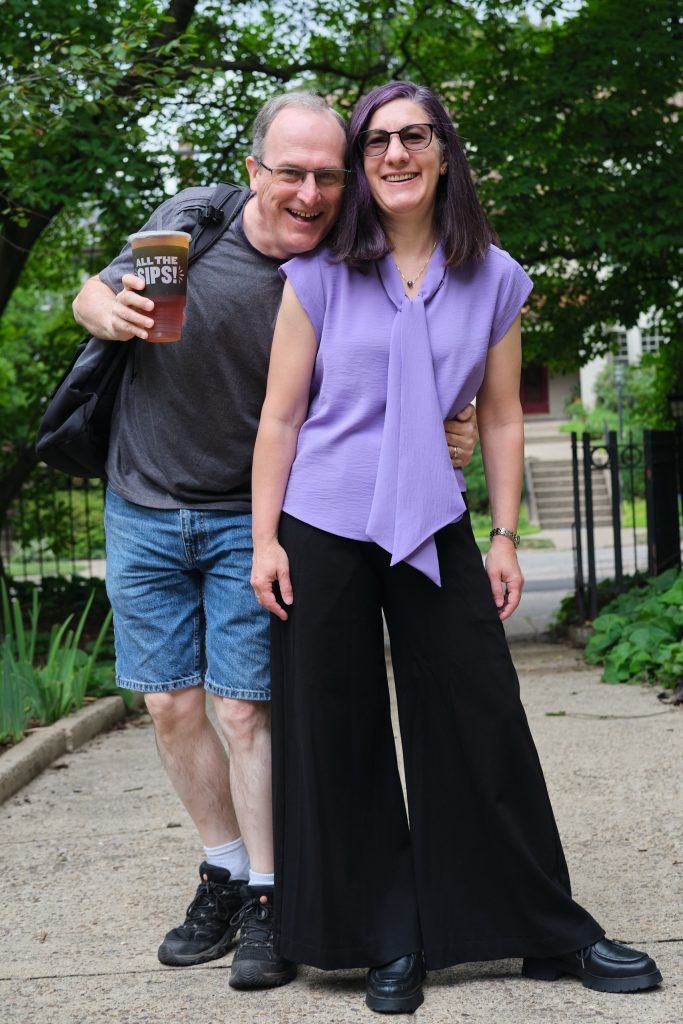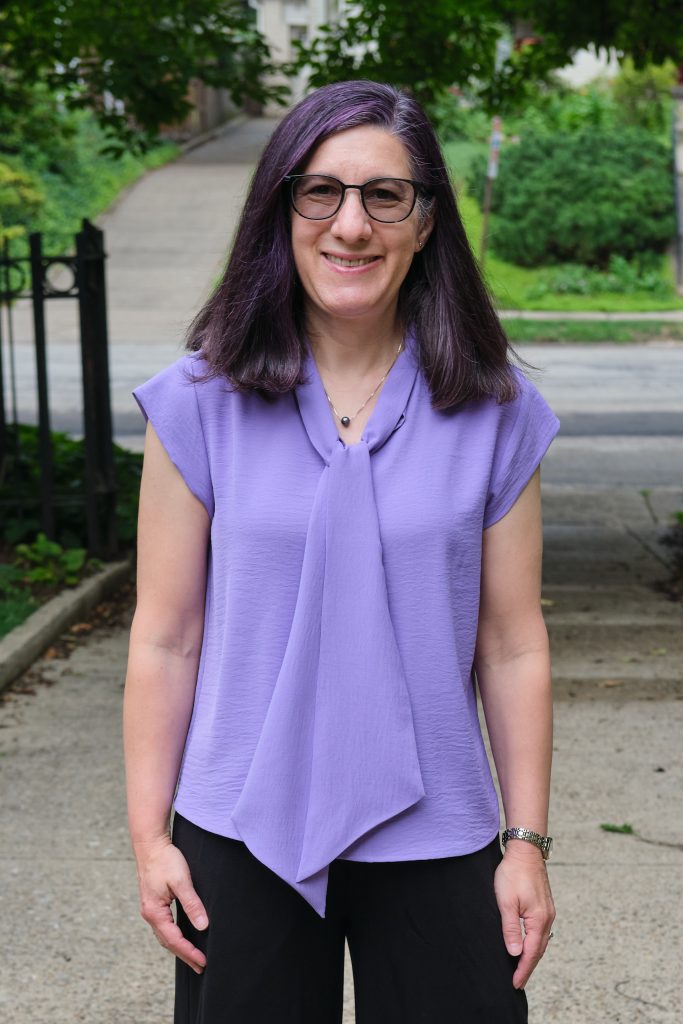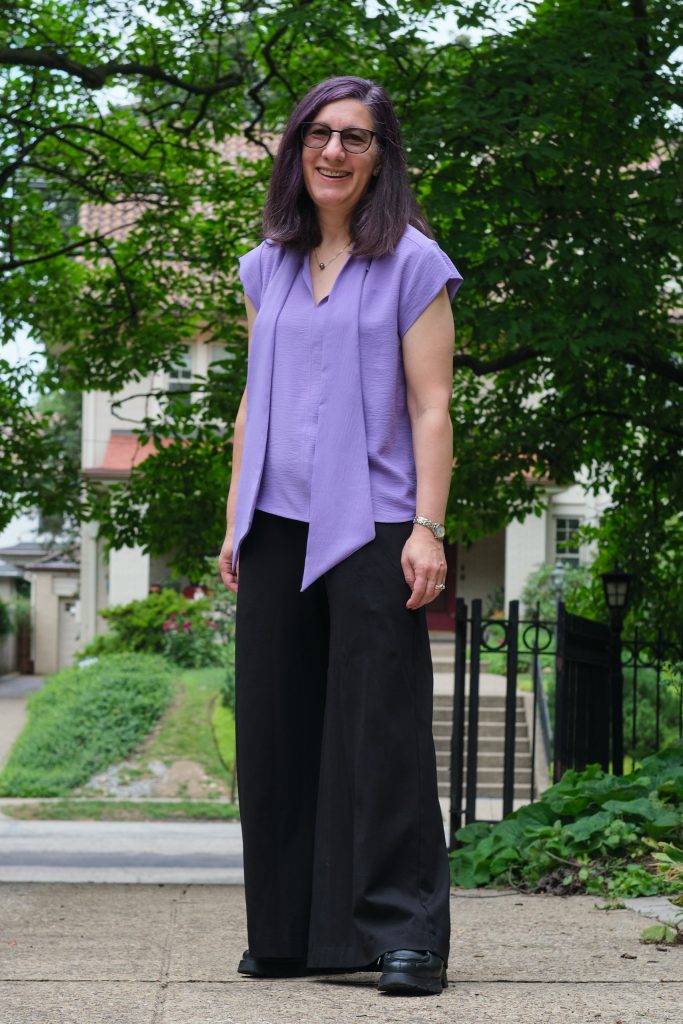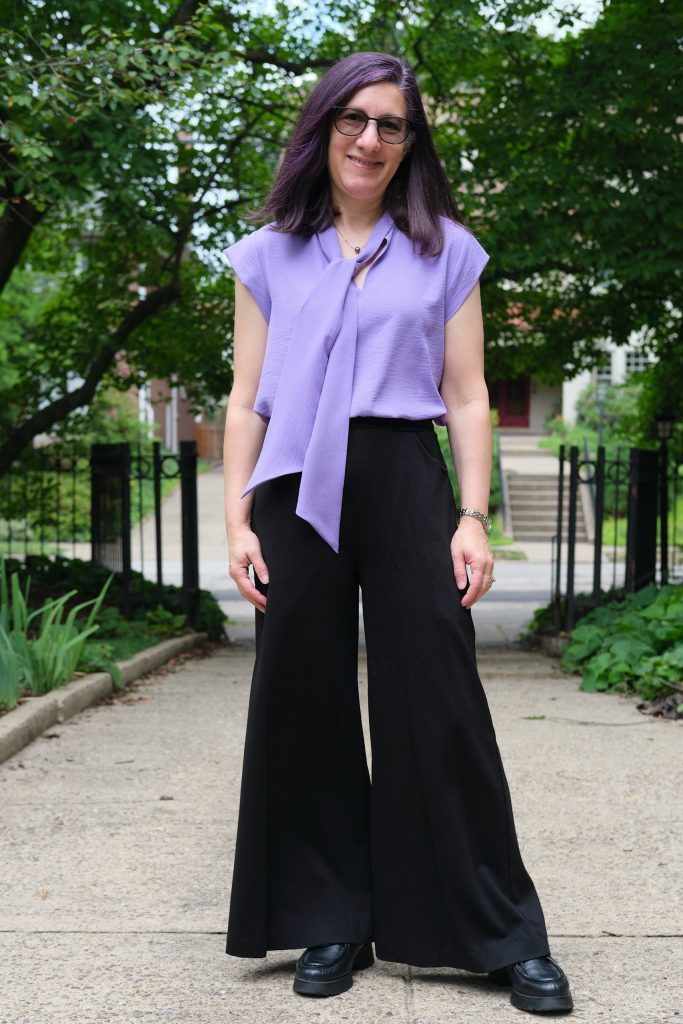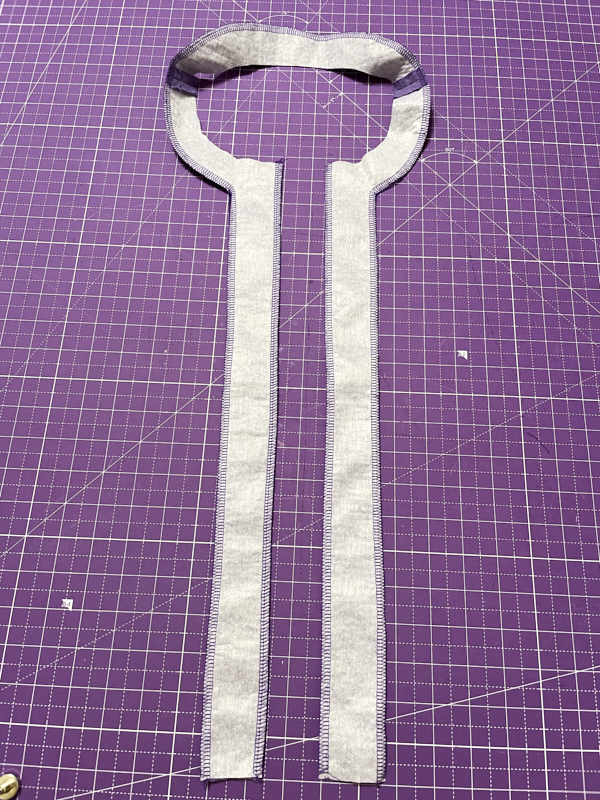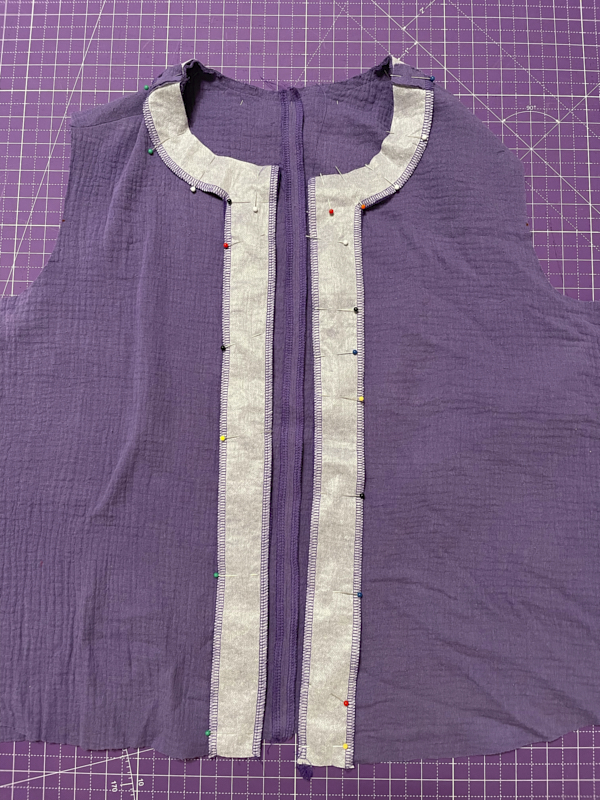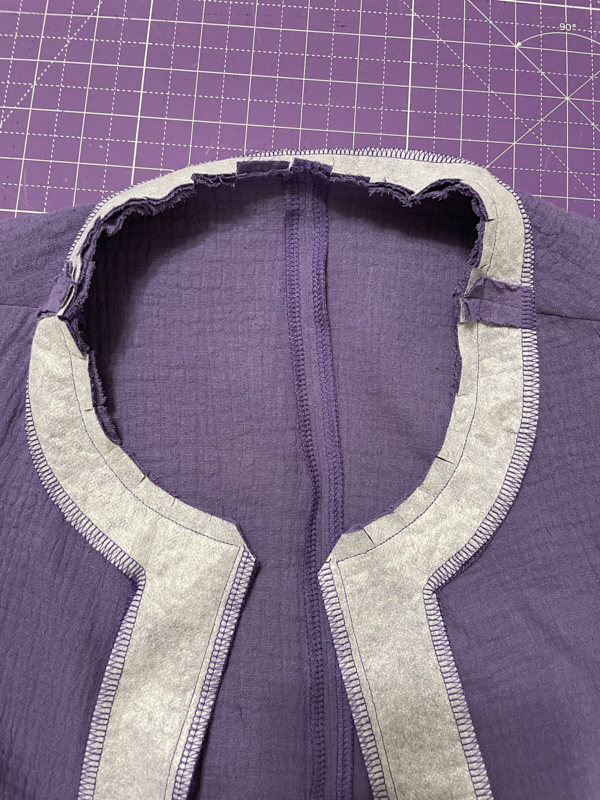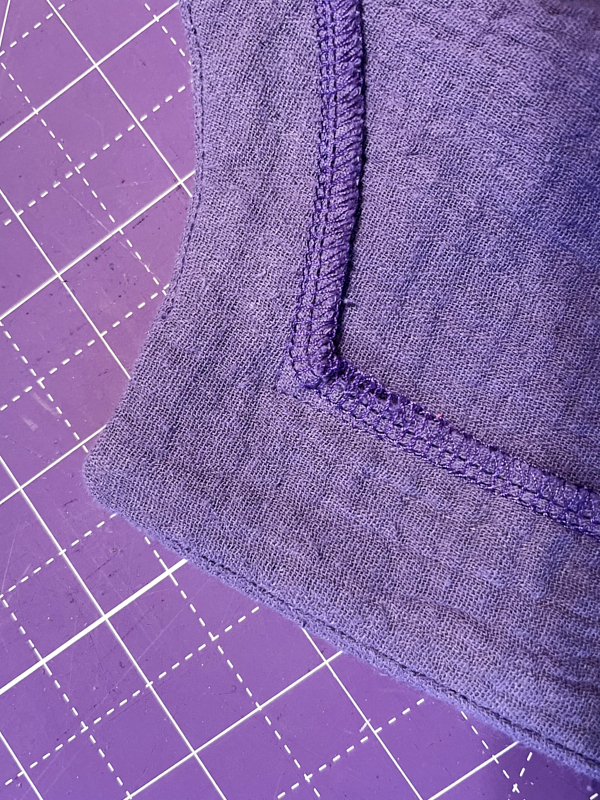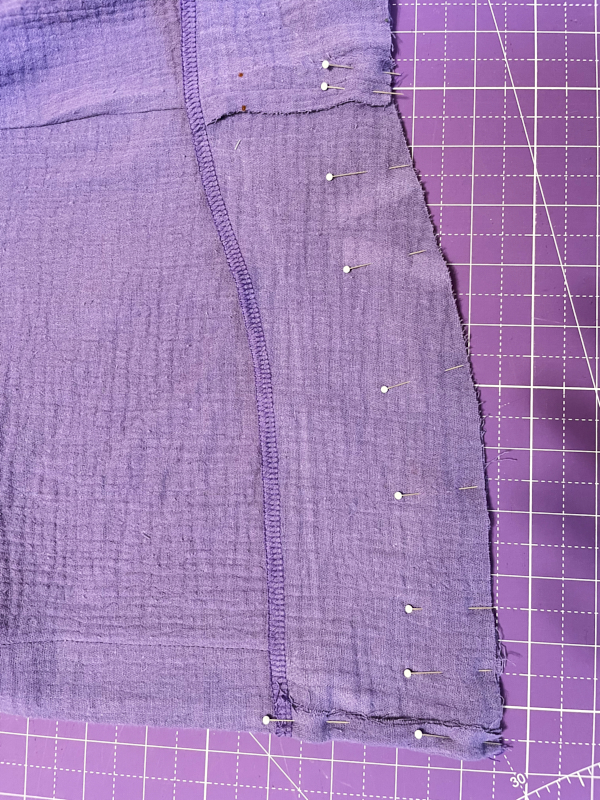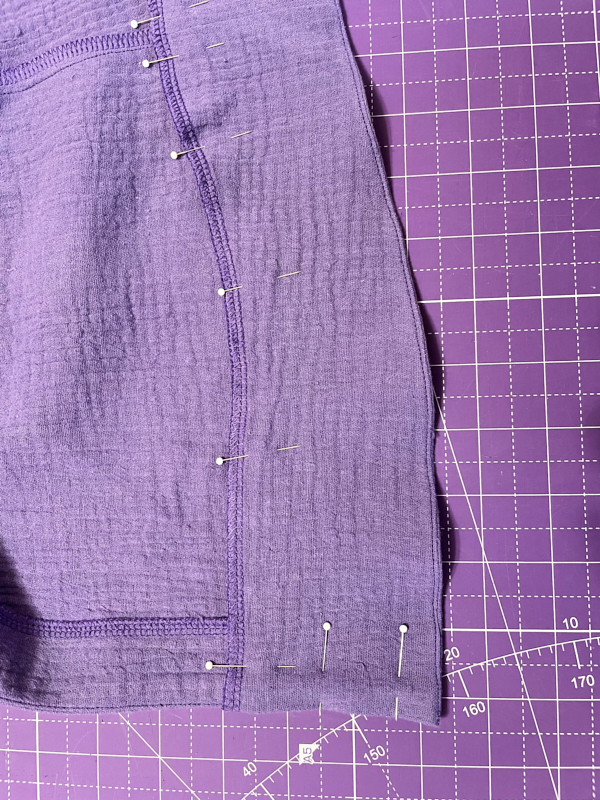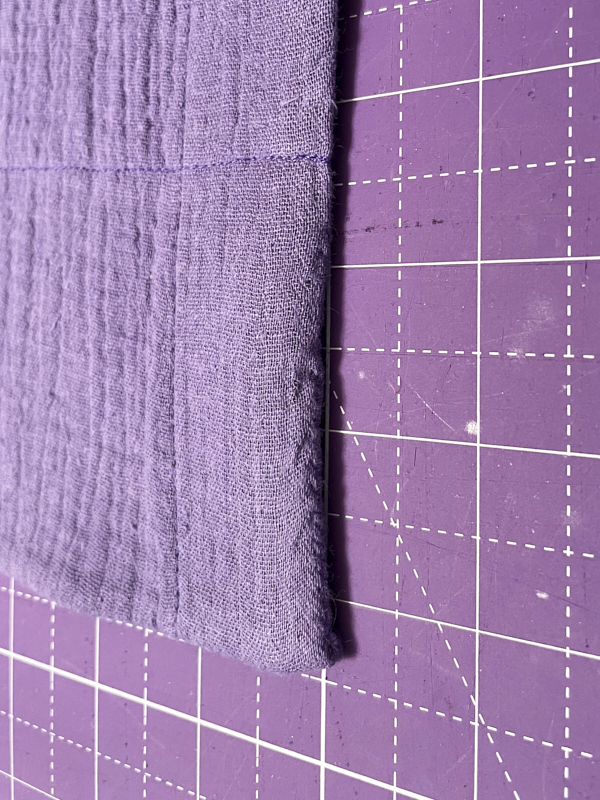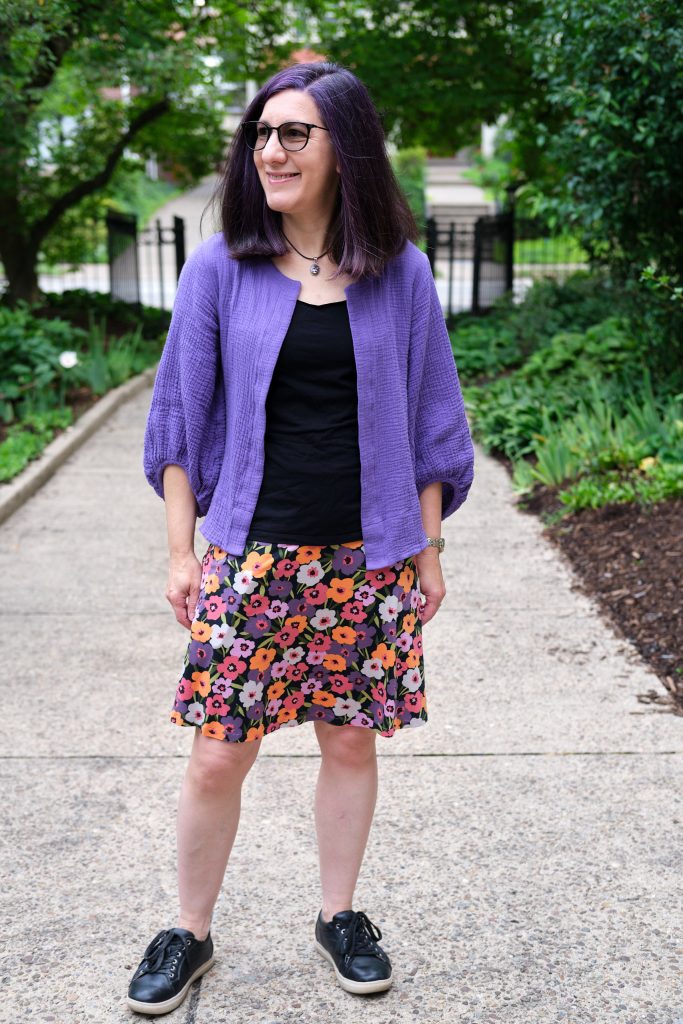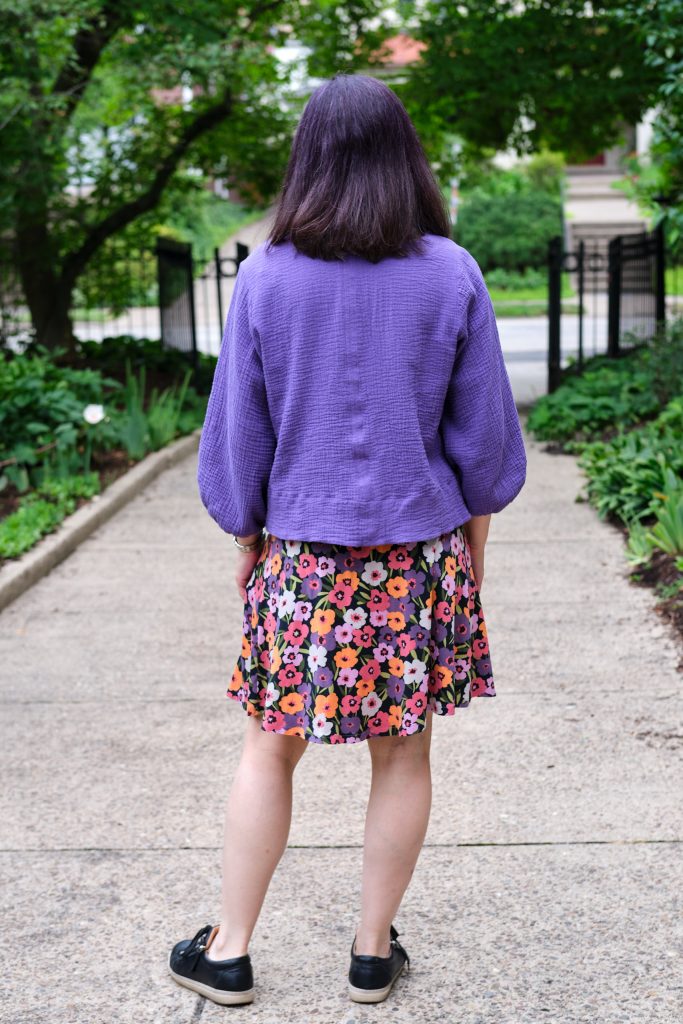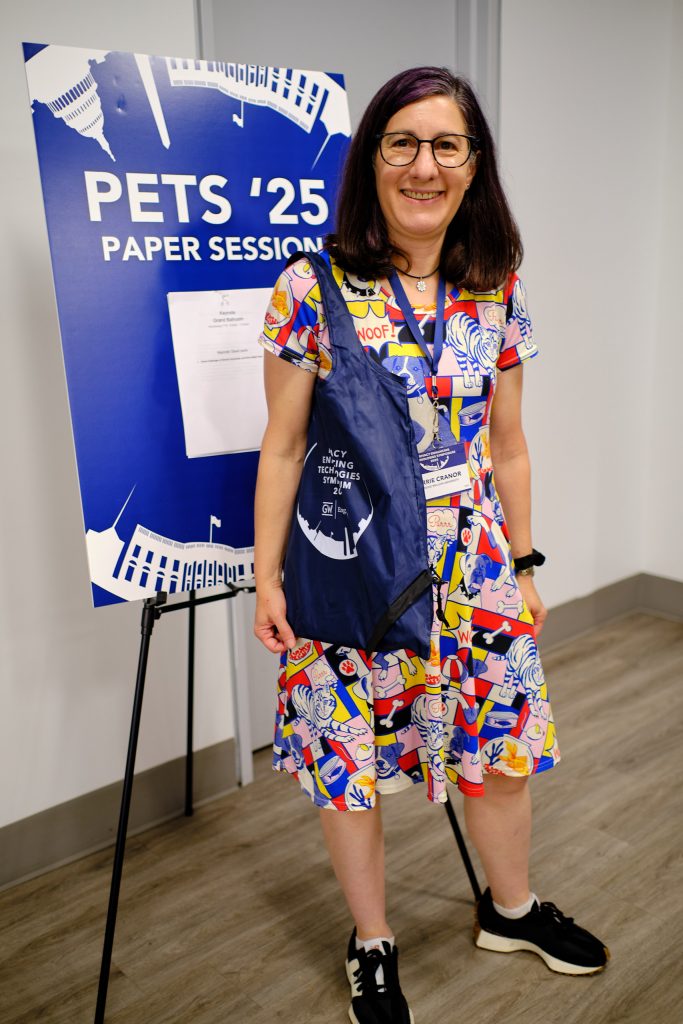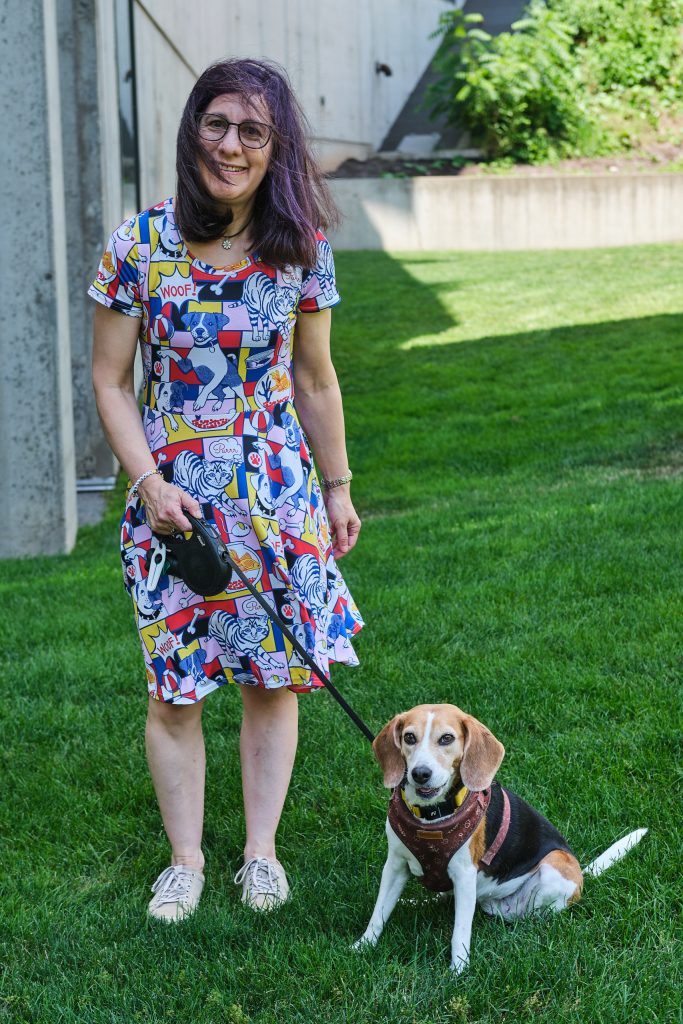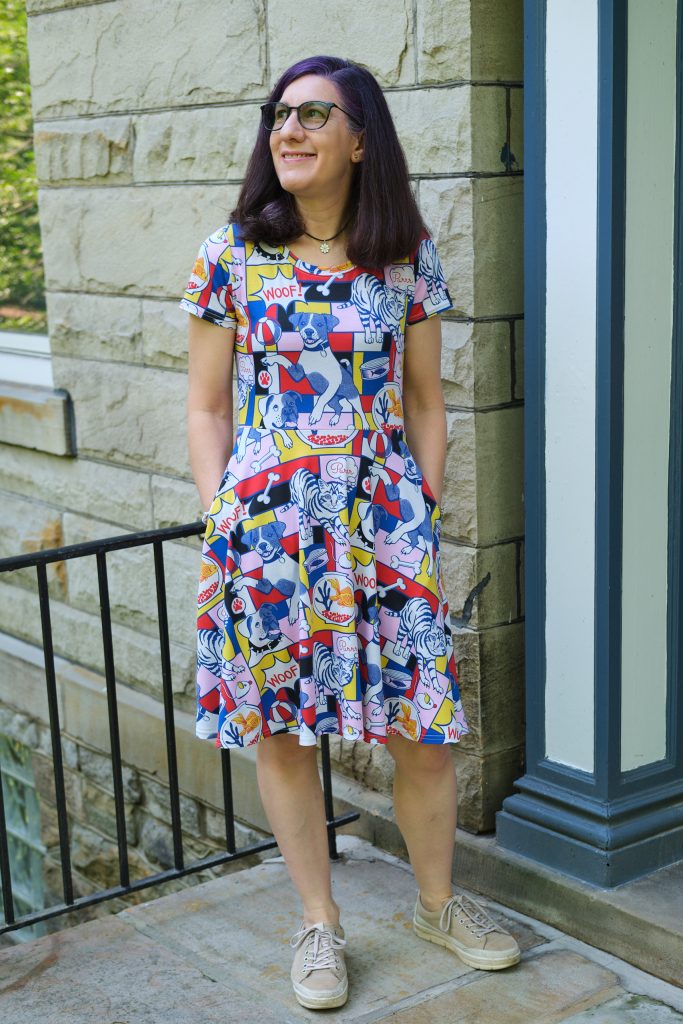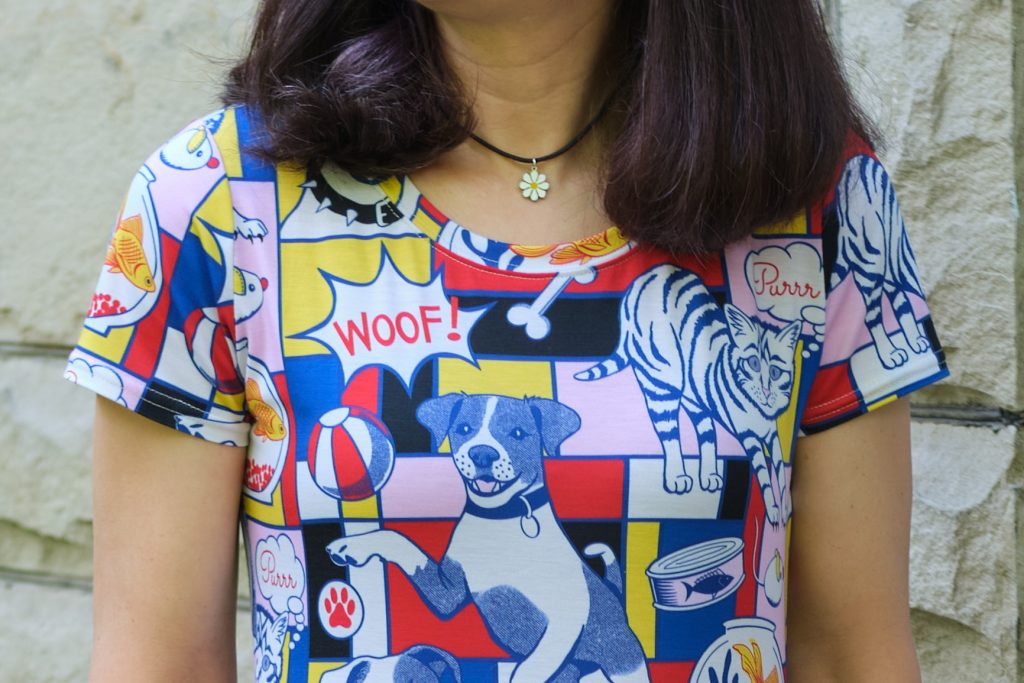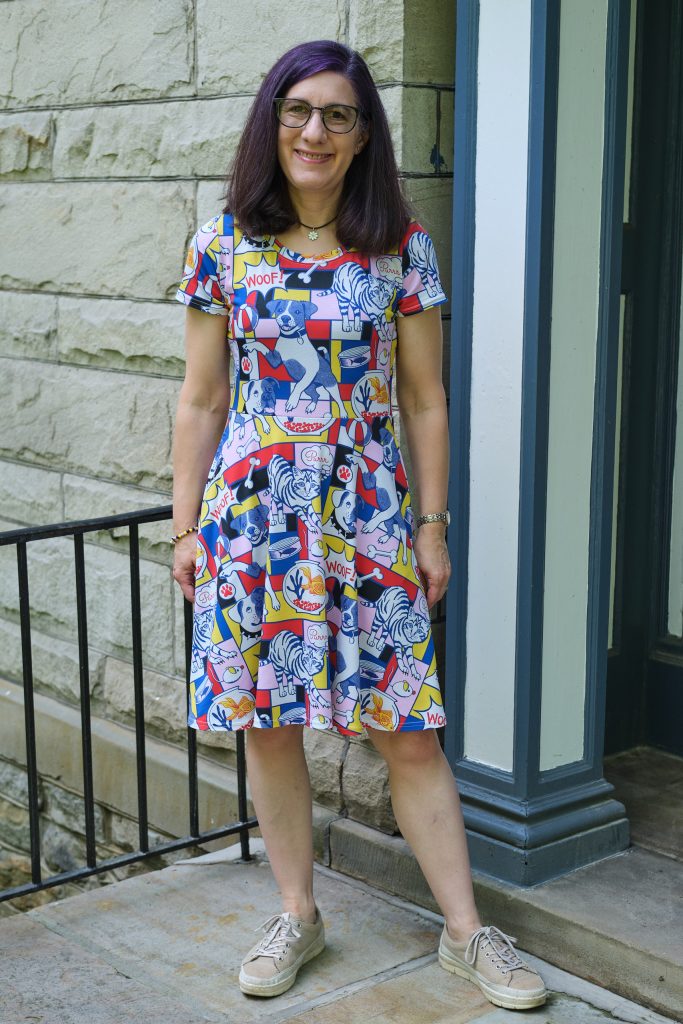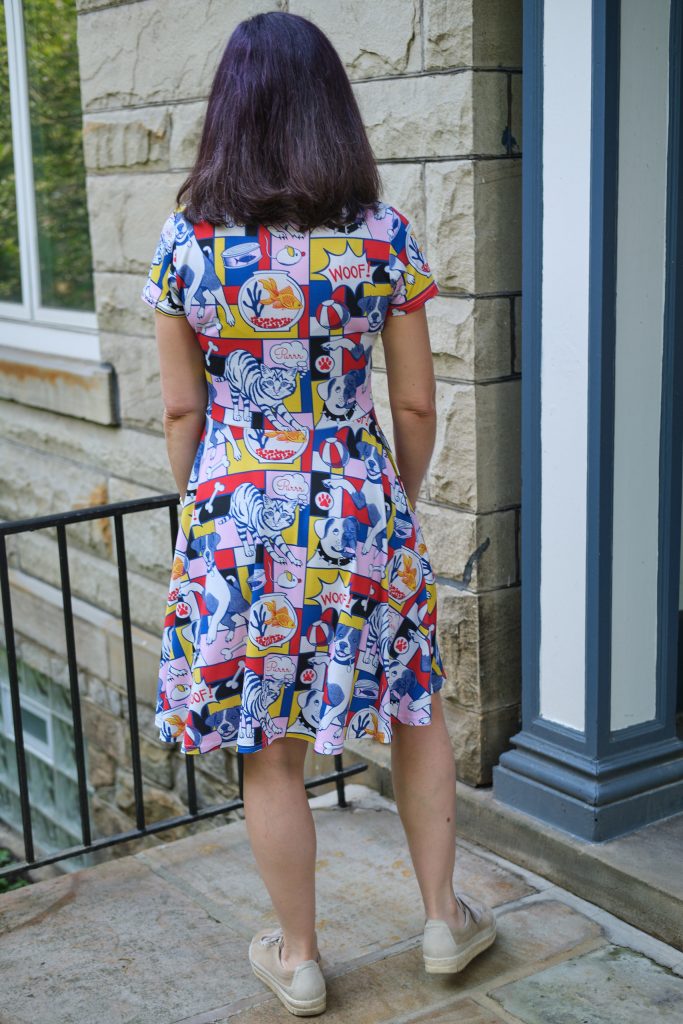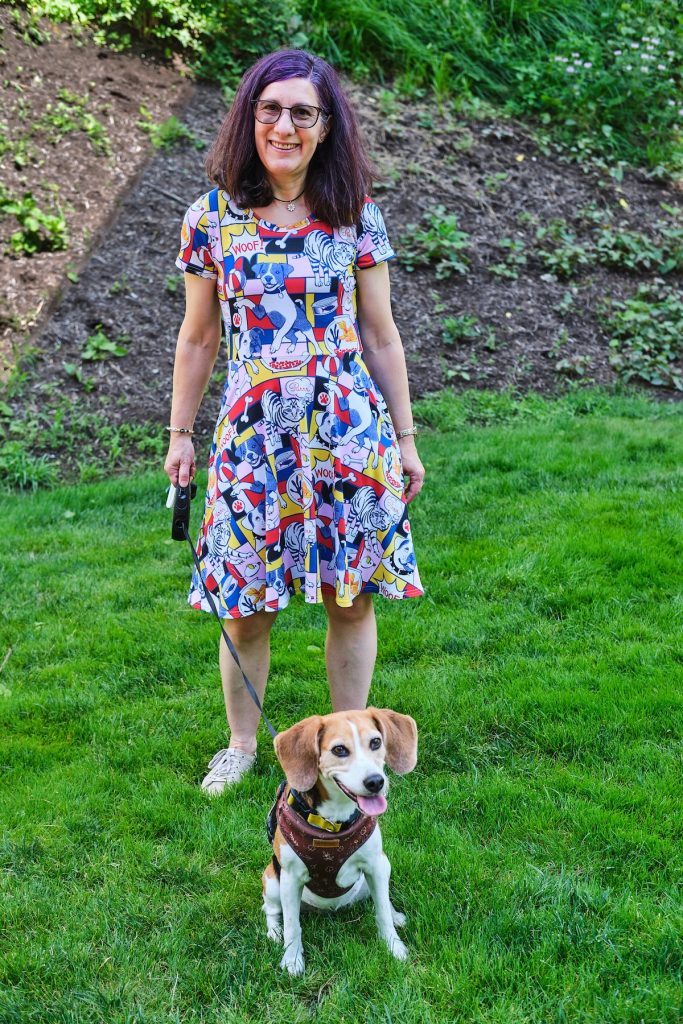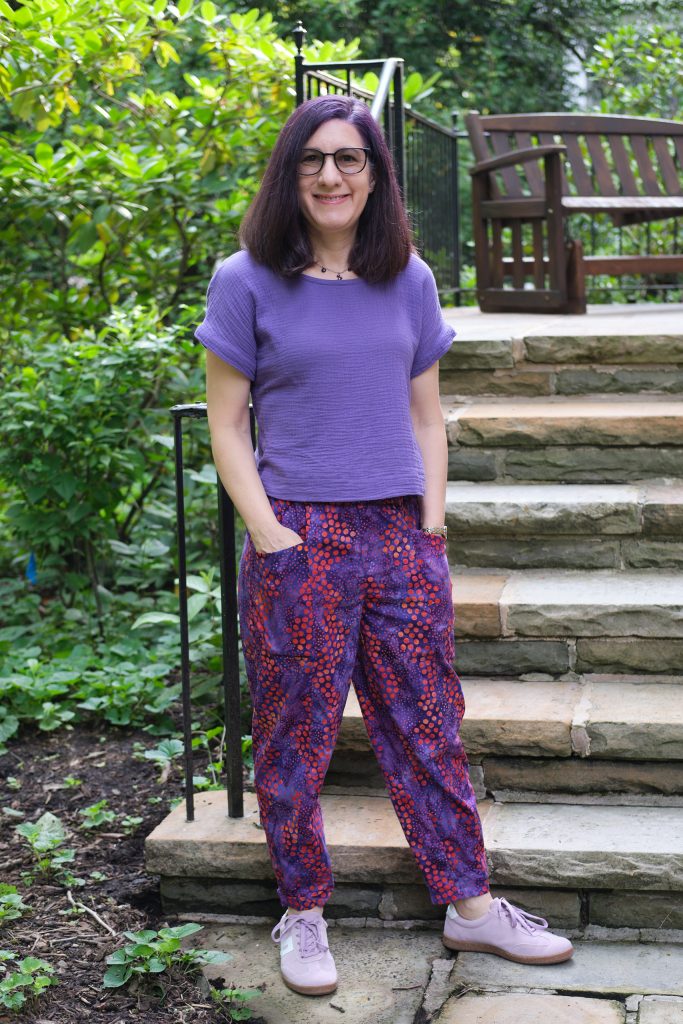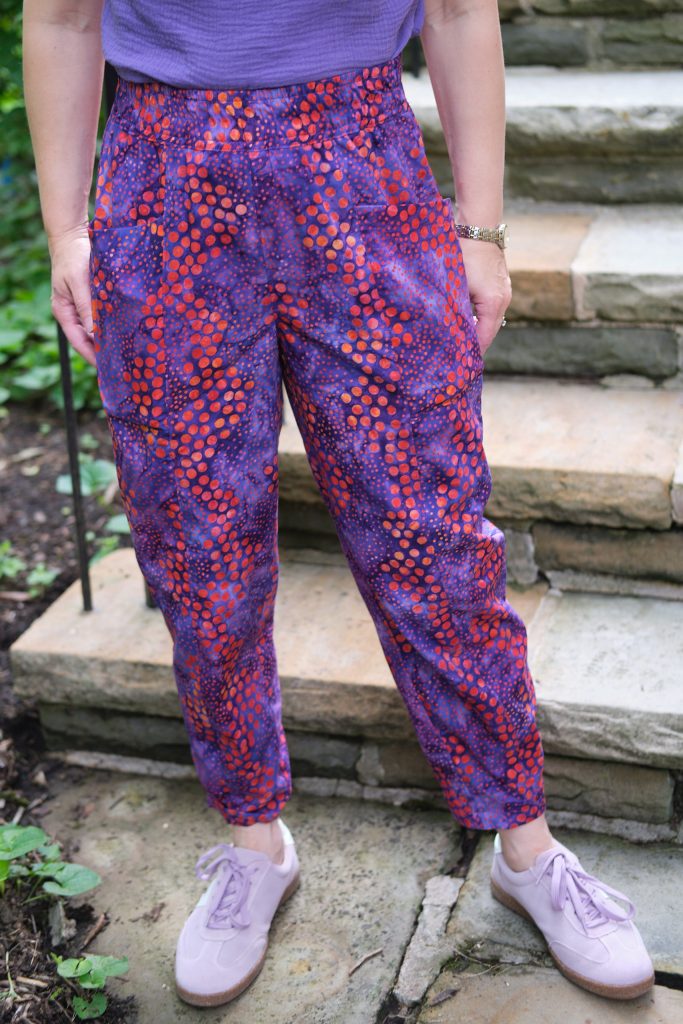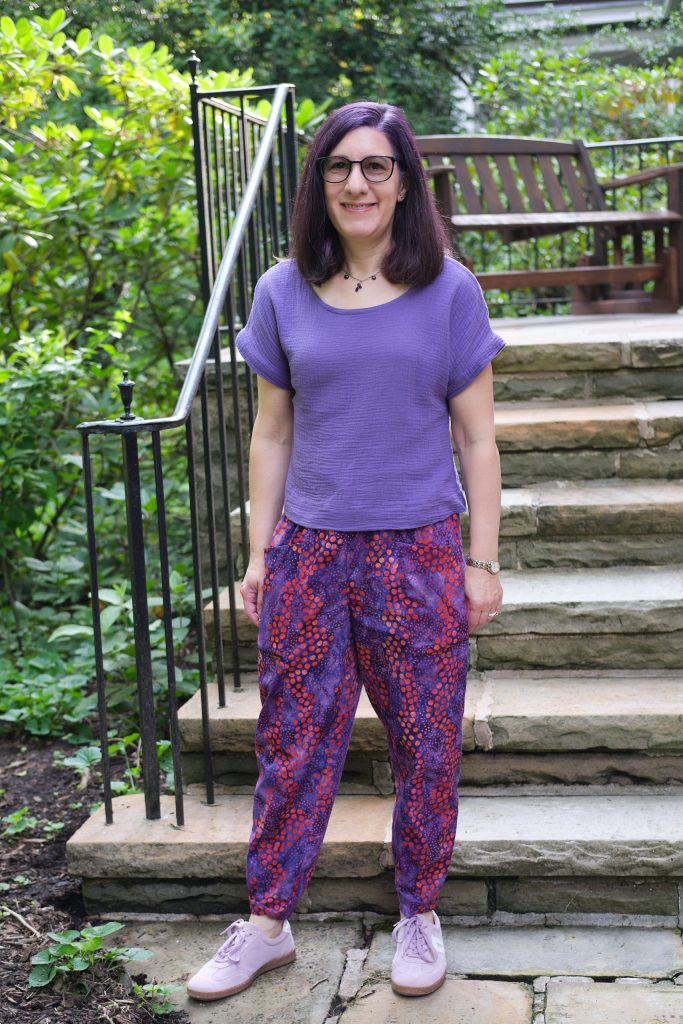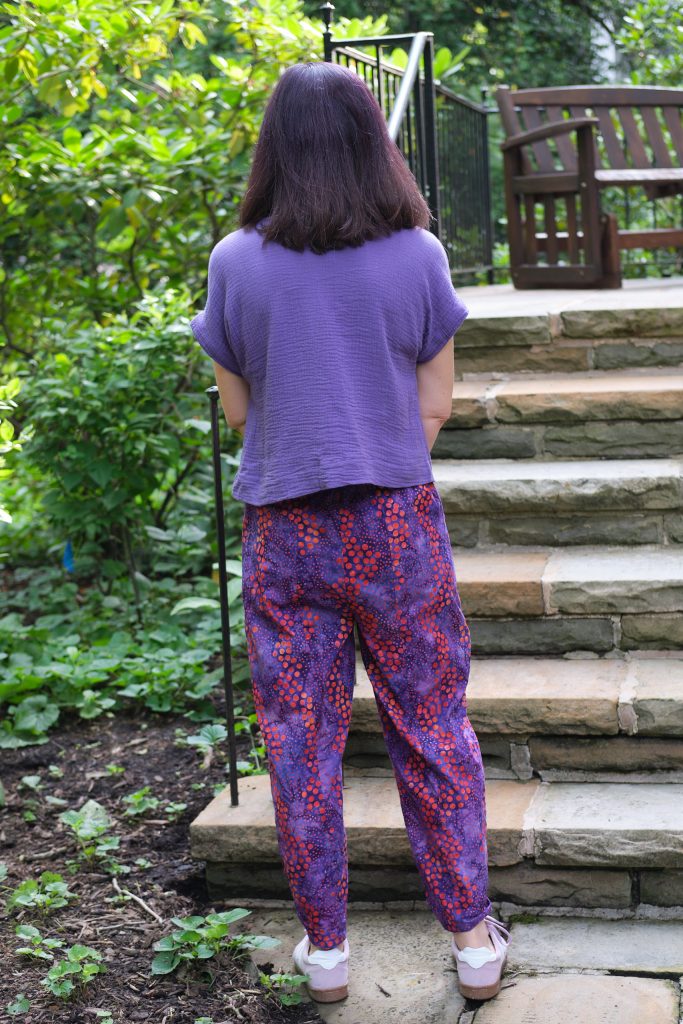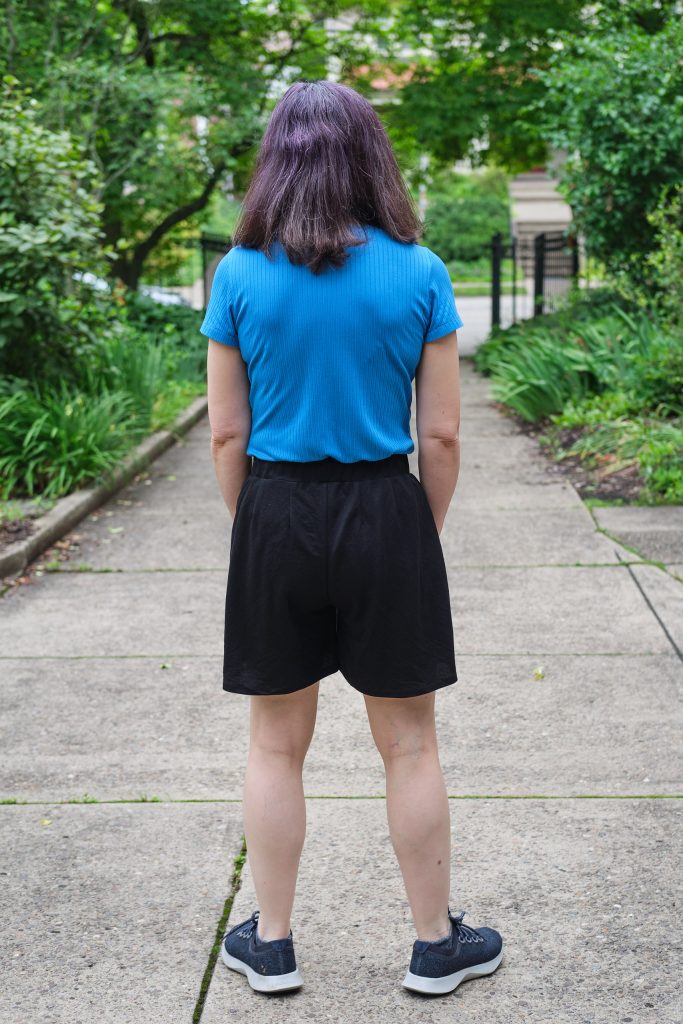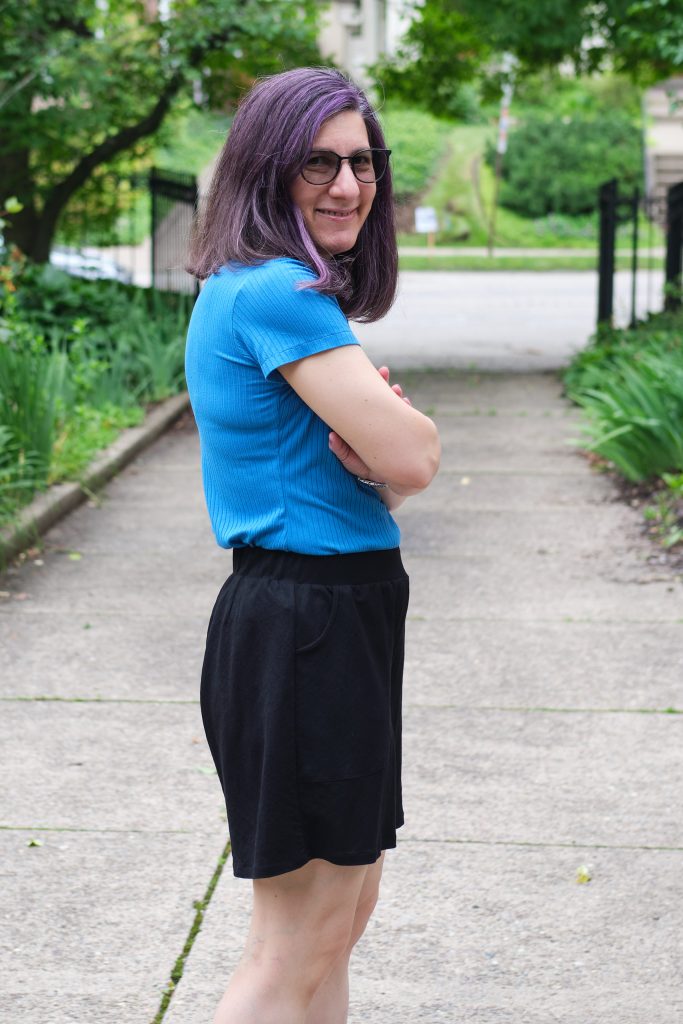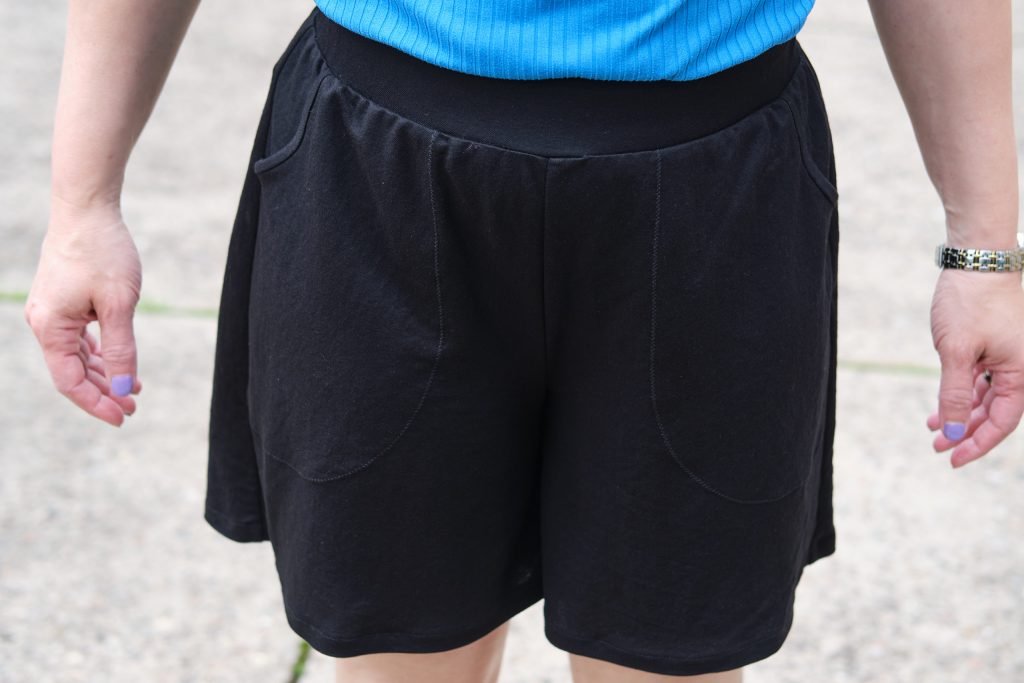Pattern Emporium Spill the Tea tapered tie neck blouse, size AU8, 1 yard polyester Florence stretch woven, regular length, plain back, shorter tie, center front opening raised 1 inch, sloped-shoulder adjustment
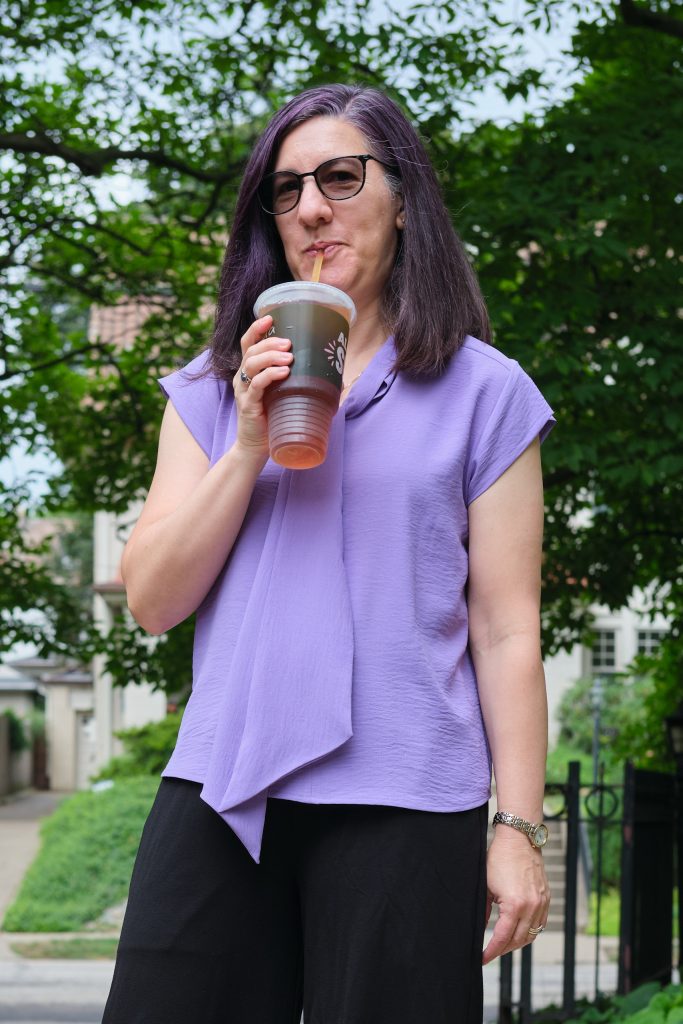
The Pattern Emporium Facebook group is filled with lovely Spill the Tea tie-neck blouses. I don’t own any tie neck blouses or even very many woven blouses, but I was intrigued by this pattern, especially the cute cap sleeve version. I normally shy away from any blouse that needs to be ironed or buttoned and has fussy collars or ties that I find always shift around and look sloppy when I wear them. This pattern doesn’t have buttons but I was a little bit uncertain about the tie.
I don’t have a lot of drapey woven fabric in my stash, but I found a couple of yards of medium weight 100% polyester Florence stretch woven in flourishing lavender than I bought last year from Surge, and decided to give Spill the Tea a try. The Florence fabric has a subtle crinkly texture and has a little bit of body but a very fluid drape. It doesn’t need to be ironed and it stretches a bit. The lavender Florence seemed perfect for this blouse, and it allowed me to get one more make with purple thread before changing the thread in my serger (my previous three makes were an Alva double-gauze purple top, Nori purple batik quilters cotton pants, and Be Mine purple double-gauze jacket).
I selected the regular length with the shorter tie and opted for the cap sleeves. I proactively added a 1/2-inch sloped shoulder adjustment and raised the center front opening by 1 inch (both adjustments that I tend to need). I finished the bottom hem by serging the edge and folding it under 1/4 inch twice and top stitching.

The Florence fabric is a bit slippery and made this pattern more challenging. It does hold a press, but takes some effort. The edges start fraying fairly quickly. I made a number of sewing mistakes that required unpicking and resewing, but in the end everything worked out ok. My good sewing machine is still in the shop so I’m using my backup machine, which adds to the challenge. When I sewed the front center seam, I don’t think I used a full 5/8-inch seam allowance, and thus when I turned under the seams and tried to top-stitch them at 1/4-inch, the turned-under seams were slightly too small. I should have serged those edges before turning them under to make sure the turned-under edge was more than 1/4-inch. I also accidentally sewed one of the cap sleeves on inside out (nobody to blame but me for this). The tie assembly is clever and a little bit tricky, and I managed to sew too far into the burrito and sewed the opening closed. But I recovered from all of these mistakes. I did take the advice to hand baste the cap sleeve edges together, and I was glad I did. I was also glad to have a serger to clean up all the fraying edges. With all those mistakes, the pattern wasn’t as much of a quick sew as it should have been.
Despite the mistakes, the end result looks great and has a very professional-looking finish. I really like the folded cap sleeves (no hemming required), and may used them on other patterns. It looks good both tucked in and untucked. We’ll see whether I end up liking tie-front blouses or not. I see from photos that people are wearing the tie sloppy, so I guess that’s the thing to do. I found if I folded it in half before tying it was a bit less sloppy. It also looks good untied. I’m unlikely to wear it tied in a bow.
Pattern Emporium has a blog post with lots of Spill the Tea blouses in different fabrics that was helpful. I also found the Lifting Pins and Needs Bow Tie Heaven video useful.
I don’t think I would sew with the Florence fabric without a serger or a pattern in which all the seams were enclosed. But I like this fabric a lot: drapey with body, a little bit of stretch, opaque, washable, and doesn’t require ironing. I will probably buy more and would like to try making some wide-leg pants with it (and possibly other tops or a dress).
Ok, enough purple for a while. Next up…. blue?
I’m modeling Spill the Tea with PE Walk Boldly pants in black ponte. My older daughter took the photos with my camera.
